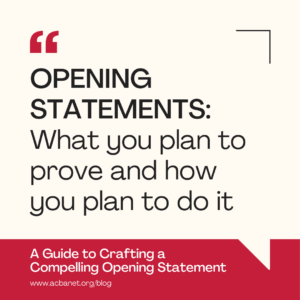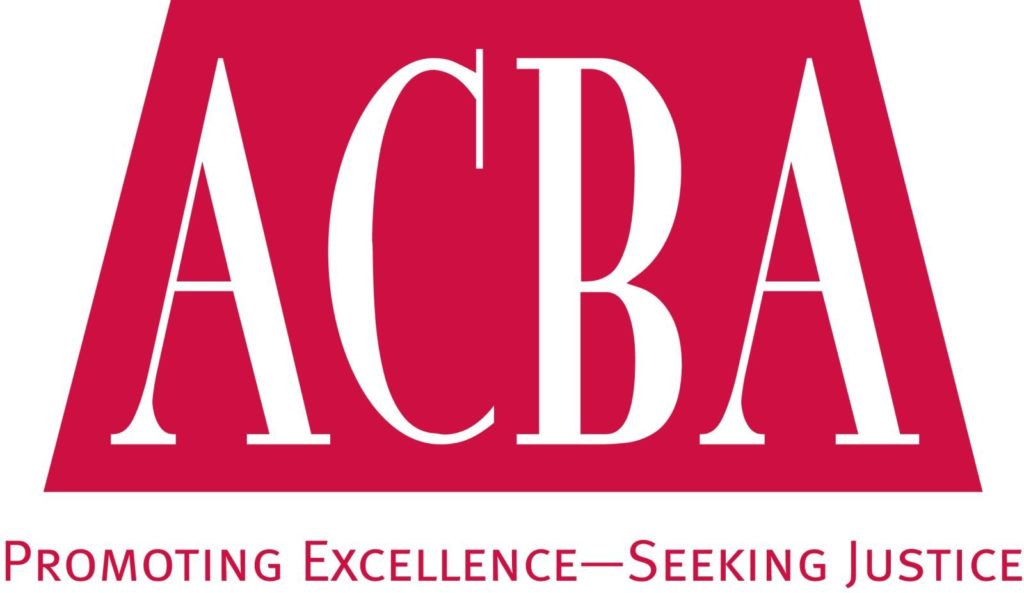 A Step-by-Step Guide to Creating an Opening Statement
A Step-by-Step Guide to Creating an Opening Statement
The opening statement is one of the most crucial parts of a trial. It sets the stage for the entire case, giving the jury their first impression of the evidence and arguments they will hear. Crafting a compelling opening statement can significantly influence the outcome of the trial. Here are some essential tips for creating an effective opening statement that captures the jury’s attention and lays a solid foundation for your case.
1. Understand the Purpose
The primary goal of an opening statement is to provide the jury with a roadmap of what they can expect during the trial. It should outline the facts you intend to prove, introduce key evidence, and frame the narrative from your client’s perspective. Remember, it is not the time for argumentation; rather, it’s an opportunity to present a clear, factual preview of your case.
2. Know Your Audience
Before crafting your opening statement, consider the demographics, backgrounds, and potential biases of the jury. Tailor your language, tone, and content to resonate with them. Use relatable analogies and avoid legal jargon that might confuse or alienate jurors.
3. Structure Your Statement
A well-organized opening statement typically follows a clear structure:
- Introduction: Begin with a strong opening that grabs attention. This could be a compelling fact, a thought-provoking question, or a brief anecdote related to the case.
- Case Overview: Provide a concise summary of the case, introducing the main parties involved and the core issues at hand.
- Facts in Chronological Order: Present the key facts in a logical, chronological order. This helps the jury understand the sequence of events and how they relate to the case.
- Key Evidence: Highlight the most important pieces of evidence you will present, explaining how they support your case.
- Witnesses: Introduce the witnesses you will call and briefly outline what they will testify to.
- Conclusion: End with a strong closing that reinforces your narrative and leaves a lasting impression on the jury.
4. Be Clear and Concise
Simplicity is key in an opening statement. Avoid overwhelming the jury with too much information. Focus on the most critical aspects of your case and present them in a clear, straightforward manner. Use simple, direct sentences and avoid technical terms.
5. Tell a Story
People are naturally drawn to stories. Frame your case as a narrative with a beginning, middle, and end. Create a storyline that is easy to follow and compelling. Use vivid language and descriptive details to paint a picture for the jury. This helps them visualize the events and emotionally connect with your client’s perspective.
6. Establish Credibility
Your demeanor and delivery are just as important as the content of your statement. Speak confidently, maintain eye contact, and use appropriate body language. Establishing credibility and building trust with the jury from the outset can have a significant impact on how they perceive your case.
7. Practice
A well-crafted opening statement can be undermined by poor delivery. Practice your statement multiple times to ensure a smooth and confident delivery. Consider rehearsing in front of colleagues or mentors who can provide constructive feedback. Pay attention to your pacing, tone, and emphasis to ensure clarity and impact.
8. Avoid Overpromising
While it’s important to present a strong case, be careful not to overpromise. Only assert what you can reasonably prove through evidence and testimony. Overstating your case in the opening statement can damage your credibility if you fail to deliver during the trial.
9. Anticipate Counterarguments
While the opening statement is not the place to argue, it’s wise to subtly address potential weaknesses in your case. Acknowledge any challenging facts upfront and provide context that frames them favorably. This preempts the opposing counsel’s arguments and helps maintain the jury’s trust.
10. Adapt to the Case Dynamics
Every case is unique, and so should be your opening statement. Adapt your approach based on the specific facts, legal issues, and overall strategy of your case. Stay flexible and be prepared to adjust your statement as new information arises during trial preparation.
Conclusion
Crafting a compelling opening statement requires careful preparation, a clear structure, and effective delivery. By presenting a coherent, engaging narrative and establishing credibility from the outset, you can significantly influence the jury’s perception of your case. Remember, the opening statement is your first opportunity to connect with the jury and set the stage for a successful trial. Make it count.
If you’re looking for more information on how to prepare for your upcoming trial, check out our on demand programming, or our upcoming live MCLEs (all free for ACBA members!).
